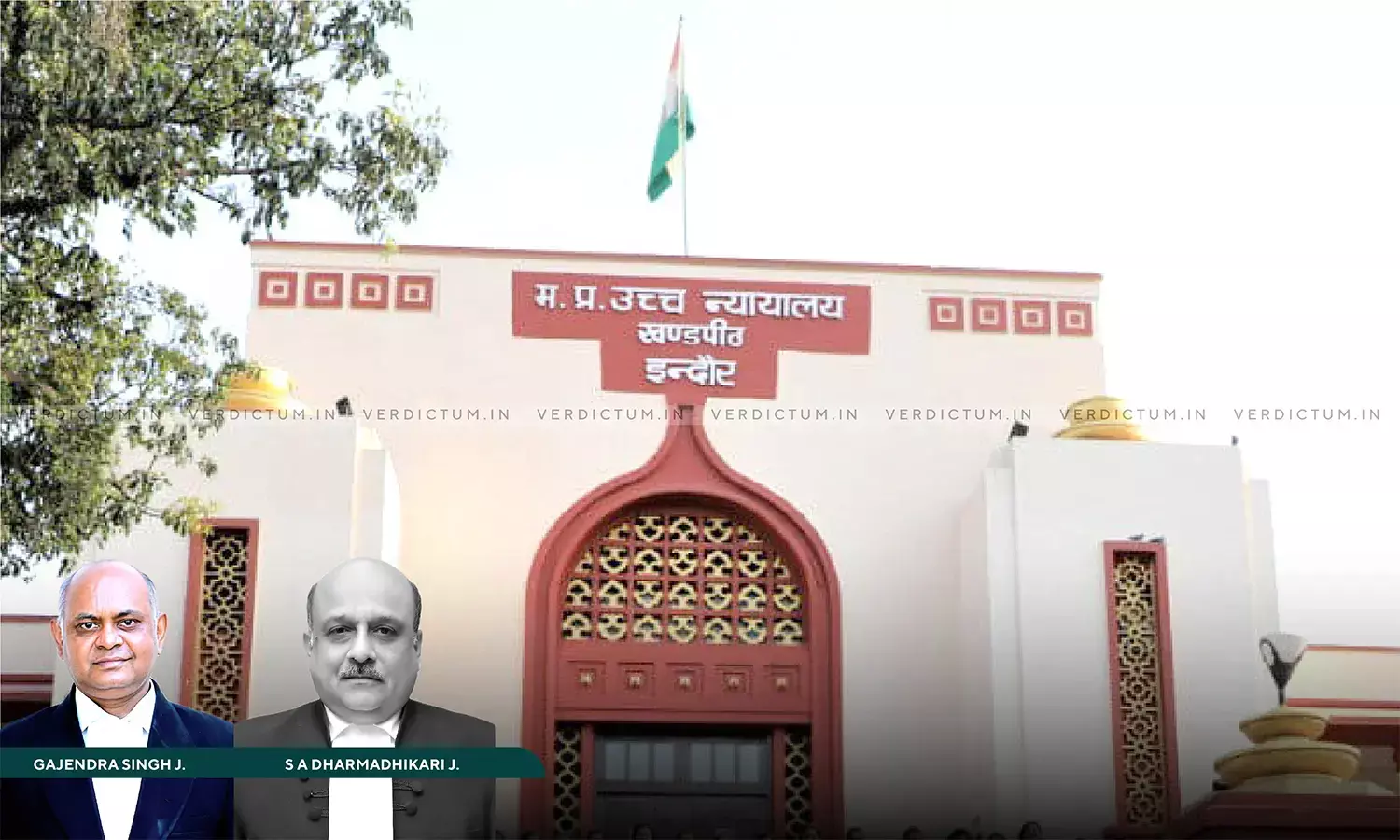Housing Finance Companies Can Resort To SARFAESI Proceedings Even If Loan Borrowings Fall Below Monetary Threshold Of 20 Lakhs: Madhya Pradesh HC
The Madhya Pradesh High Court has held that the Housing Finance Companies (‘HFCs’) are entitled to recover the loan outstanding under the provisions of the Securitisation and Reconstruction of Financial Assets and Enforcement of Security Interest Act, 2002 (‘SARFAESI Act’), irrespective of the loan borrowings falling below the threshold of Rupees Twenty Lakhs.
A writ petition was filed assailing the order passed by a Judicial Magistrate under Section 14 of the SARFAESI Act. The action was sought to be taken under Section 14 for recovery of a loan amount due on the part of the petitioner owed to Respondent No. 2 i.e. SRG Housing Finance Limited) (‘Respondent HFC’).
The Division Bench of Justice Sushrut Arvind Dharmadhikari and Justice Gajendra Singh observed, “Respondent HFC is entitled under law to resort to SARFAESI Act towards recovery of their loans and borrowings, irrespective of the loan borrowings in favour of the petitioner falling below the threshold of Rs. 20 Lakhs…(c) The notifications relied upon by the petitioner as issued by the Central Government (Ministry of Finance) on applicability of SARFAESI Act on NBFCs shall not be applicable in the context of HFCs / HFIs, but only in the context of NBFCs so defined under Chapter III-B of the RBI Act, 1934, specially Section 45(I)(f).”
Advocate Kushagra Jain appeared for the Petitioners whereas Advocate Rohit Saboo appeared for the Respondents.
The Petitioner borrowed a secured loan of Rs. 8 Lakhs from Respondent HFC, mortgaging his property as collateral. On his default in repayment, the amount became outstanding and proceedings under Section 13 of the SARFAESI Act were initiated. Following by declaration of Non-Performing Asset (‘NPA’) and Section 13 proceedings, the magistrate directed coercive measures against the Petitioner by taking over possession.
The Court dealt with the main issue i.e. whether Respondent HFC was justified in resorting to provisions of the SARFAESI Act for recovery of their outstanding dues when it is lower than the monetary threshold of Rs. 20 Lakhs which is a bar fixed by the Ministry of Finance for the Non-Banking Financing Companies (‘NBFC’).
The Court applied the principle of “generalia specialibus non derogant” (general provisions never derogate from the special ones and that general provisions must always give way to the special provisions), relied on Managing Director, Chhattisgarh State Co-operative Bank Maryadit v. Zila Sahkari Kendriya Bank Maryadit & Ors. (2020 SC) and noted, “In view of our above exposition of the principal of ‘generalia specialibus non derogant’, clearly the provisions contained under Chapter III-B of the RBI Act, specifically Section 45 (1)(f) cannot be treated to be applicable in the context of HFI’s/HFC’s established under Section 29A of the NHB, for the purposes of interpretation of notifications issued under 2 (1)(m)(iv) of the SARFAESI Act. HFIs/HFCs will be categorised as FIs not by virtue of their being NBFCs, but because of their falling under the phrase ‘any other institution’ as mentioned under Section 2 (1)(m)(iv). The notifications resultantly issued pertaining to NBFC would therefore on the strength of above reasoning will also not apply to HFC’s/HFI’s.”
The Court discussed the interrelation between the trinity of the SARFAESI Act, the National Housing Bank Act, 1987 (‘NHB Act’) and the Reserve Bank of India Act, 1934 (‘RBI Act’). The Court said that the provisions of Section 45 (I)(f) of the RBI Act, may include all companies engaged in the principal business of housing finance and lending, however in the face of the existence of a special enactment of the NHB Act, especially Section 29-A, the specific category or the sub-species of the HFI(‘Housing Finance Institution’)/ FI(‘Financial Instituion’) shall stand out separately, not covered by the general provisions of the RBI Act, but covered by the specific provisions of the NHB Act.
The Court held, “When it comes to issuance of notification pertaining to registration or bringing into existence of any HFI/HFC, the same would always be sourced from provisions of NHB Act, especially Section 29A, and not to that of RBI Act. This is however with a clear rider that RBI may prescribe guidelines/ directions laying down preconditions for any HFCs/ HFIs to get registered. But that doesn't dilute the character and identity of any housing company as an HFIs/HFCs under the NHB Act. For this reason therefore, the HFI/ HFC shall fall under the phrase ‘any other institution’ occurring under Section 2 (1)(m)(iv) of the SARFAESI Act and not as a sub-species of NBFC under Section 45 (I) of the RBI Act.”
The Court further said, “Thus, where two interpretations arise out of the interplay of two different enactments, Courts must always adopt that interpretation that furthers the intention of the legislature to be applied for, which is also reflected from the legal maxim ‘verba ita sunt intelligenda ut res magis valeat quant pereat’ (if two constructions of a provision are possible on its face and one would clearly advance the legislative purpose, whilst the other might end up achieving little or nothing, the former should always be preferred).”
As regards various notifications issued by the Ministry of Finance, the Court said that the notifications are issued separately with a separate list of enumerated HFCs / HFIs by the Central Government which is indicative of the regime that HFCs / HFIs stand in an altogether different steel silo than the NBFCs.
Ergo therefore the Court accepted the contentions of the respondent that HFCs/ HFIs are an entirely different special class, which are covered under the phrase ‘any other institution’ adumbrated under Section 2(1)(m)(iv) of SARFAESI Act and can't be classed with other NBFCs.
Accordingly, the Court dismissed the writ petition.
Cause Title: Virendra Rathore and Ors. v. Tehsildar Distt. Mandsaur and Ors.
Appearances:
Petitioners: Advocate Kushagra Jain
Respondents: Advocate Rohit Saboo




